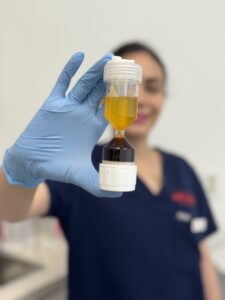PRP Hair Loss Treatment Toronto
Platelet Rich Plasma (PRP) can be used to successfully treat hair loss. Performed in a state-of-the-art manner, PRP treatments for hair are non-surgical and entirely natural. Your own platelet-rich plasma is injected into your scalp, allowing the “growth factors” in your blood cells to do their job, resulting in naturally stimulated hair growth.
- Home
- Hair Loss Solutions
- Non- Surgical Hair Loss Solutions
- What Is PRP Treatment For Hair Loss
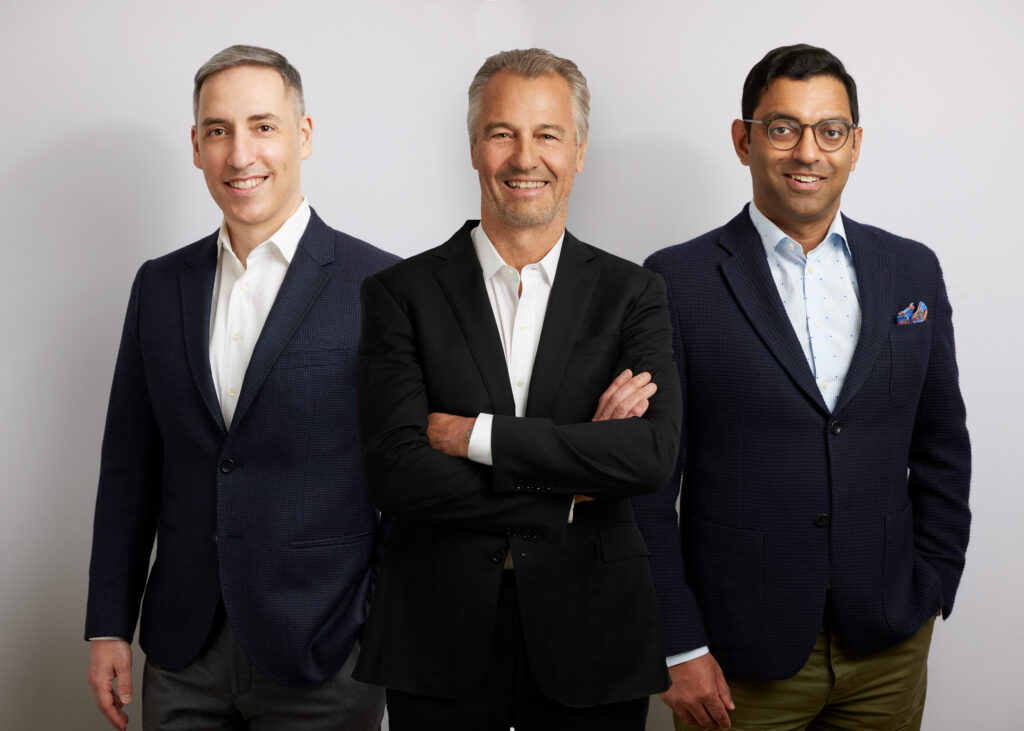
Toronto Hair Transplant Surgeons are internationally known for our pioneering work in hair transplantation.
What is PRP?
Platelet Rich Plasma, or PRP, is a high concentration of platelets contained in a small volume of plasma from your own blood. Platelets are the components of your blood that release various prp with growth factors for hair that initiate your body’s healing cascade. The idea behind this prp treatment for hair growth is that the platelet-rich plasma obtained from the blood contains growth factors that can stimulate hair follicles, increase blood supply to the scalp, and thicken the hair shaft.
The Process of PRP Therapy
PRP therapy is typically performed in three steps, with each treatment spaced 4-6 weeks apart. Maintenance treatments are then required every 4-6 months to maintain the results. Let’s take a closer look at each step of the process:
Step 1: Blood Draw and Centrifugation
The first step of PRP therapy involves drawing a patient’s blood, usually from their arm. The blood is then placed in a centrifuge, a machine that rapidly spins to separate fluids of different densities. After approximately 10 minutes in the centrifuge, the blood separates into three layers: platelet-poor plasma, platelet-rich plasma, and red blood cells.
Step 2: Platelet-rich plasma Extraction
The platelet-rich plasma layer, which contains a higher concentration of platelets and growth factors, is carefully drawn up into a syringe. This platelet-rich plasma is the key component used in the subsequent injection into the scalp.
Step 3: Injection into the Scalp
The final step of PRP therapy is the injection of the platelet-rich plasma into areas of the scalp that require increased hair growth. The injection process aims to deliver the growth factors directly to the hair follicles, stimulating their activity and promoting Platelet Rich Plasma for hair growth.
The Plasma Hair Treatment Cost for Hair Loss
The PRP for hair cost therapy can vary depending on several factors, including geographic location, the quality of equipment used, and the addition of nutritive components. Generally, the initial three treatments range from $1,500 to $3,500, with each subsequent maintenance treatment costing around $400 or more.
It’s important to note that many insurance plans consider PRP therapy for PRP for hair loss women to be a cosmetic procedure and may not cover the costs. However, it is always advisable to check with your insurance provider to determine if any coverage is available for you.
Who uses PRP?
Almost anyone with hair thinning or hair loss can be a good candidate for PRP. For some, PRP is used in conjunction with other hair restoration modalities, such as medication or surgery, as a means of being more “aggressive” with treatment. PRP is especially useful for those who are not candidates for surgery or who want to try non-surgical approaches before considering surgery.
Lastly, a “PRP soak” at the time of hair transplant surgery may increase the viability of your grafts, speed healing, reduce redness, and decrease the possibility of “shock loss”.
What are the benefits of PRP?
The main benefit of PRP is thought to be the production of new blood vessels, which helps support the activity of hair follicles, promoting growth of stronger, healthier hairs. Studies have shown that PRP can increase the density of your hair, as well as making individual hairs thicker. In addition, PRP can increase the anagen, or growing phase, of your hair. Combined, these benefits result in the appearance of thicker, denser hair with less shedding.
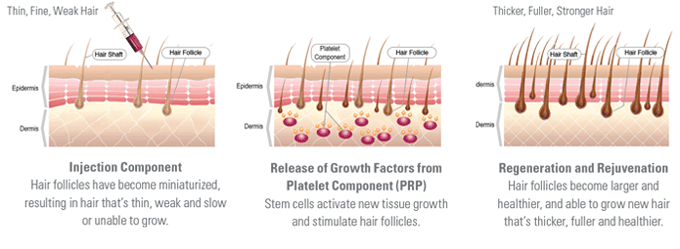
Our Results
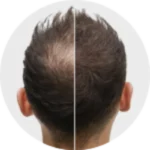
Toronto Hair Transplant Surgeons are internationally known for our pioneering hair transplantation work.
Our huge archive is here to help you see what we can do for you. Use the link below to view some sample cases.
What is the PRP process like?
At the Toronto Hair Transplant Surgeons, we use the Clarion PRP system, collecting 22ml of blood. This system is one of the most effective at eliminating unwanted red and white blood cells from PRP.
Once drawn, your blood is placed in a high-speed centrifuge and the platelets are isolated. The plasma is then concentrated, collected, and injected into the scalp with tiny needles. The entire process takes about 30 minutes.
How Many PRP treatments are required?
Treatment is divided into the induction and maintenance phases. The induction phase consists of 4 treatments, each one month apart. A 5th maintenance treatment is then done 6 months after that. One year from your first treatment, an evaluation is done to assess the effectiveness of the treatment. If effective, only maintenance treatments every 6 months are required on an ongoing basis. If you discontinue treatments, you may lose the benefit of PRP over time.
What is the PRP process like?
At the Toronto Hair Transplant Surgeons, we use the Clarion PRP system, collecting 22ml of blood. This system is one of the most effective at eliminating unwanted red and white blood cells from PRP. Once drawn, your blood is placed in a high-speed centrifuge and the platelets are isolated. The plasma is then concentrated, collected, and injected into the scalp with tiny needles. The entire process takes about 30 minutes.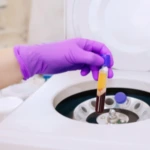
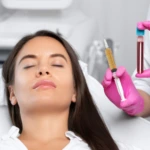
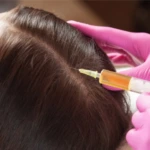
How Many PRP treatments are required?
Treatment is divided into the induction and maintenance phases. The induction phase consists of 4 treatments, each one month apart. A 5th maintenance treatment is then done 6 months after that. One year from your first treatment, an evaluation is done to assess the effectiveness of the treatment. If effective, only maintenance treatments every 6 months are required on an ongoing basis. If you discontinue treatments, you may lose the benefit of PRP over time.THTS Gallery
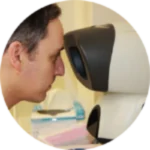
Familiarize yourself with our layout before you come in.
Visit the gallery to take a peek at our Oakville based clinic layout and surgical rooms.
Is PRP painful?
There may be some brief discomfort at the injection sites. There may also be some redness and inflammation at the injection sites, but this resolves very quickly.
We’re proud to offer the Pro-Nox anxiety and pain control system, one of the most advanced comfort measures available for hair transplant surgery and PRP procedures available today. Pro-Nox is a system that delivers an inhaled mixture of nitrous oxide and oxygen. This mixture is highly effective at calming your nerves and lessening the discomfort of brief periods of your surgery or procedure.
What are the risks of PRP?
There are no known risks to PRP. The platelets and plasma being injected come from your own body, therefore there is no risk of allergic reaction.
Can I have PRP at the time of my hair transplant surgery?
Yes! This is called a “PRP soak”. Rather than injecting PRP into your scalp, your excised follicular unit grafts are soaked in PRP. The PRP is returned to your scalp when your grafts are planted. This may increase the viability of your transplanted grafts, speed healing, reduce redness, and reduce the possibility of “shock loss”. This is a popular choice many of our patients at the Toronto Hair Transplant Surgeons make when planning their surgery.
What is the success rate of PRP for hair regrowth?
PRP therapy has shown promising results in stimulating hair regrowth, with studies indicating increased hair density and thicker individual hairs. Success rates vary, but many individuals experience notable improvements in hair quality and thickness.
How effective is PRP treatment for hair fall?
PRP treatment has demonstrated effectiveness in reducing hair fall by promoting stronger and healthier hair growth. It aids in prolonging the growth phase of hair (anagen phase), thereby minimizing shedding.
Can anyone have PRP?
Almost anyone with hair loss is a good candidate for PRP. Patients who cannot have PRP include:
• Patients on blood thinning medications (e.g., warfarin, clopidogrel), including chronic use of anti-inflammatories (e.g., ibuprofen).
• Patients taking vitamin E, fish oil, or omega 3 oil supplements within 1 week of treatment.
• Patients with low platelet count.
• Pregnant women.
• Women who are breastfeeding.
Still have questions?
We recommend booking a virtual consult with one of our doctors (use the button below) to ask your questions. Consultations at the Toronto Hair Transplant Surgeons and handled personally by one of our three doctors.



